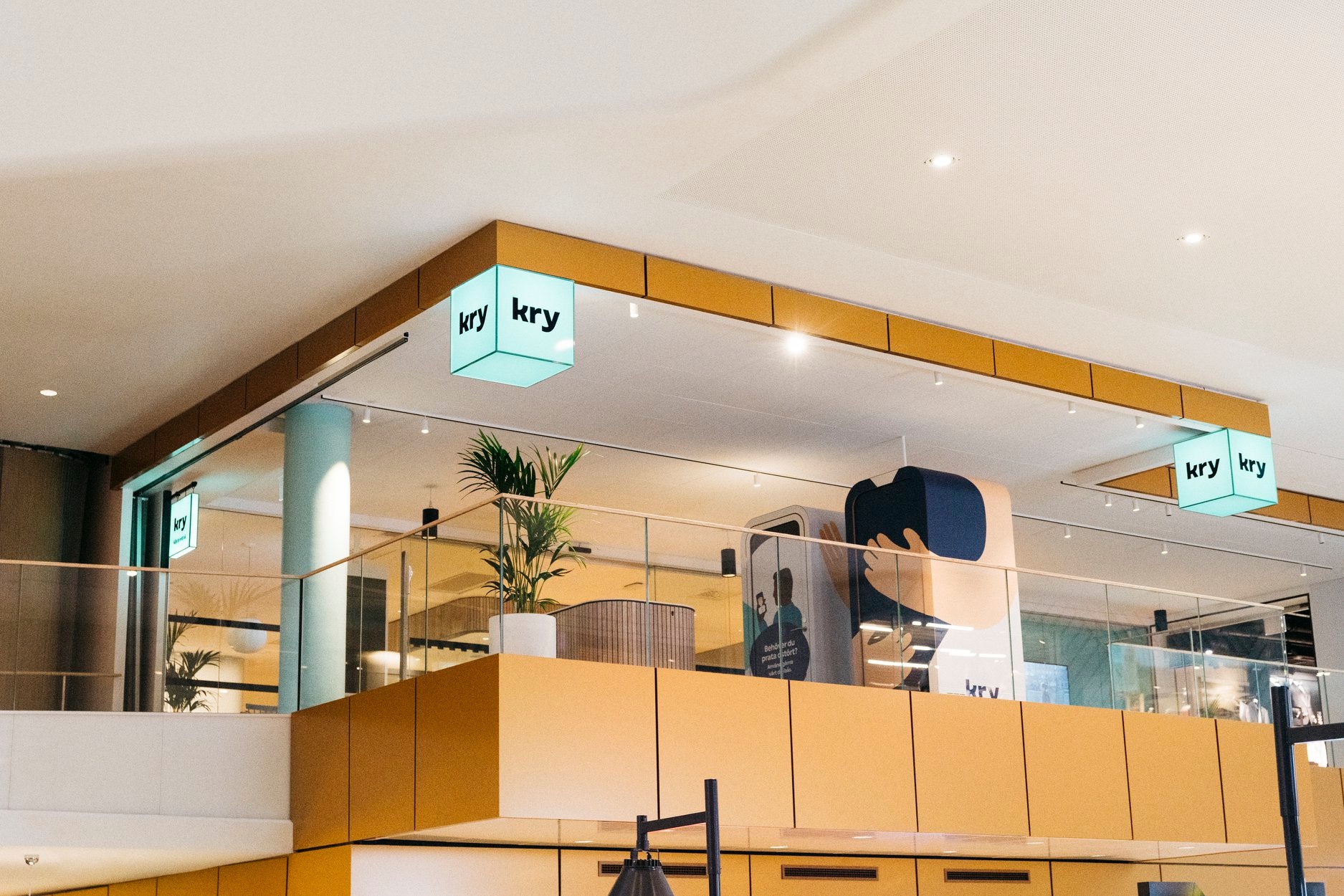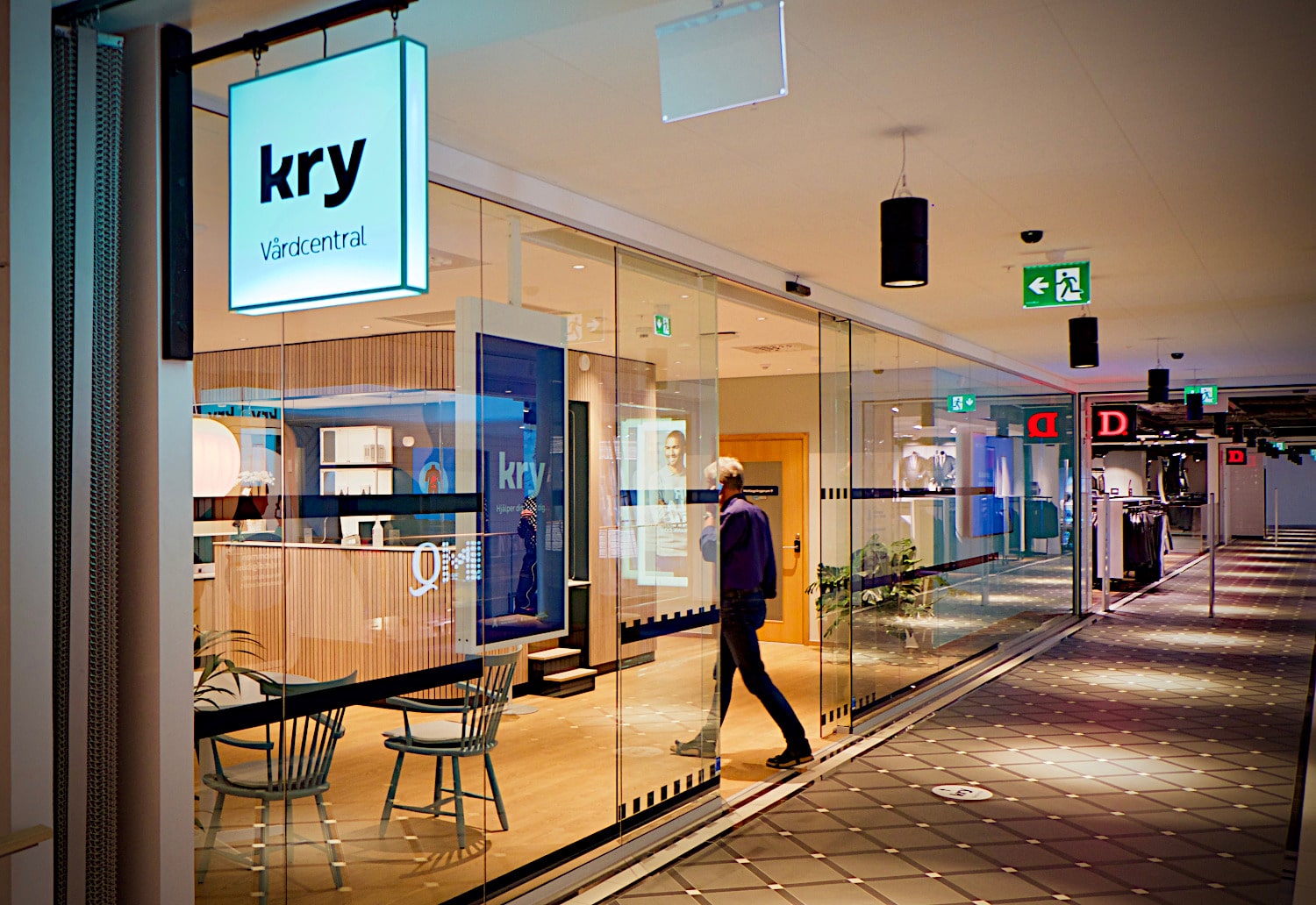My time at Kry / Livi

During my time at Kry, I had the opportunity to contribute to how healthcare is delivered across Europe. Kry, active in Sweden, Norway, France, and Great Britain, is Europe's largest digital healthcare provider offering video, chat and physical consultations with doctors and psychologists.
As a software engineer, my primary focus was on the clinician-facing web application - a tool used by doctors and nurses for managing appointments, writing prescriptions, and patient communication. This application also served as a resource for the support team, aiding in appointment management and clinician communication.
I played a key role in developing vital features like video, voice, messaging and chat. In the latter phase of my time at Kry, I was also in the AI team, where I was responsible for capturing data from video calls for AI processing, a step forward in helping clinicians save time and focus on patient care.
Moving to a new platform
One of the first things we did as a new team was to move the legacy React application (called Care Portal 1.0) to a new and improved platform called Kry Pro. We had a bunch of features and functions from the old app that needed to be shifted over. It was a chance to decide what to keep, improve, and get rid of. The team worked hard, met our deadlines, and even made some of the old processes more user-friendly.
Clinicians still used the old Care Portal 1.0 when I started at the company. Some still do, but we've been gradually moving people to Kry Pro over the last year and a bit. The old app was initially mainly made for Swedish video meetings, but as Kry grew and expanded into new markets, it started showing its age. It was difficult to add new features or scale up. The idea with Kry Pro was to create a platform that wasn't just easier to use but more flexible for adding new services and features. We wanted it to be something that could quickly adapt to changes and cut down on the time we spent developing new stuff.
One specific thing I remember fondly was how we improved how clinicians use templates for messaging patients. It wasn't just about transferring these templates to the new app; we took the time to really dig into the whole process.
- We established a new process for updating templates. This involved working closely with colleagues like copywriters, designers, product managers, and clinicians to ensure we were all on the same page and the templates were updated and enhanced in quality.
- We changed where the templates were stored, from many places scattered across the backend to a centralised location in a CMS. Making it easier to find and update them.
- We conducted a thorough content audit of the existing templates. This helped us improve the content where needed and remove any templates that were outdated or no longer used.
The impact of these changes was significant. Thanks to the collective effort of many teams (it wasn't just us!), we've seen our clinician efficiency metrics improve dramatically on the new platform. Depending on the type of shift, efficiency has almost doubled. It clearly shows how small changes can make a big difference.
Voice as fallback
Another initiative I'm particularly proud of during my time at Kry was leading the development of the "voice as fallback" feature. This project aimed to reduce no-shows by offering an alternative that could turn a potentially missed appointment into a completed one.
Like any healthcare organisation, we're no fans of no-shows. When a patient misses an appointment, it's not just a missed opportunity for care; it also means a clinician's time gets wasted when they could have been seeing someone else.
We primarily schedule video meetings for remote consultations. However, things don't always go as planned. Sometimes, patients don't pick up, or the internet connection is too poor for a video call. To address this, we came up with a fallback solution: if a video call doesn't connect, the clinician can switch to a VoIP call that directly dials the patient's mobile phone. The idea was to reduce no-shows by offering an alternative that could turn a potentially missed appointment into a completed one.
As the lead developer on this project, I was responsible for the technical implementation and delegating tasks among the team. I also worked closely with the product manager to ensure we were on the same page and that the project was moving in the right direction. We also had a designer on the team who helped us with the UI and UX. We had a lot of fun working on this project; seeing it come to life was a great feeling.
The results speak for themselves:
- We managed to salvage about 69.3% of meetings that would have otherwise been no-shows simply by switching to a phone call.
- Only 5.7% of these calls went unanswered.
- Interestingly, this method received the highest average patient grade compared to other meeting types, even video calls.
- We've since rolled this out in two markets, with hundreds of clinicians using this feature for thousands of meetings.
Reducing high cancellation and no-show rates

One of our most frequent type of meetings is a drop-in video consultation. While these meetings were popular, we noticed a concerning trend: the cancellation and no-show rates were climbing, reaching record highs by July 2022. Addressing this became a top priority for the company.
Through a series of strategic tweaks and improvements, we achieved significant reductions in both cancellation and no-show rates by April 2023:
- We saw a 23.5% decrease in cancellation rates from February 2022.
- Even more impressively, we reduced these rates by 62.6% from the record highs in July.
- The no-show rate dropped by 19.7% from February 2022.
- And we achieved a substantial 52.2% decrease from the peak no-show rates.
Considering the scale of our operations, these percentages translate to saving thousands of appointments that would have otherwise been missed.
What we did to aid this
The "voice as fallback" feature, which I previously mentioned, significantly reduced failed consultations. However, our goal was to prevent video call failures in the first place. While standard approaches like refactoring code, fixing bugs, and monitoring services were part of our strategy, I introduced and implemented several key innovations:
- Diagnostic checks for clinicians: I developed a feature that allows clinicians to run diagnostic checks on their audio/video setup. This ensures that their equipment is ready for a call, reducing the likelihood of technical issues during consultations.
- Self-help guidance: To minimise reliance on support teams, I created a set of guidelines to help clinicians troubleshoot and fix common technical problems independently.
- Audio indicators in video calls: I was involved in adding audio indicators within the video call interface. This feature helps both clinicians and patients quickly identify and resolve sound issues.
Additionally, my colleagues contributed by integrating functionalities for patients, such as the ability to add consultations to their personal calendars and perform their own technical checks, mirroring the clinician's capabilities.
These combined efforts helped us reduce the number of failed calls and improve the overall experience for clinicians and patients.
Reflections
I'm proud of the work I did at Kry. Reflecting on my time, there's a bunch more I could talk about. We did a lot, and the team was awesome. I'd love to work with them again someday. For now, I'm just happy looking back at all we did.
Some other memories that stand out:
- Collaborating with other teams was always a blast. Seeing how everyone banding together could make a real difference was incredible.
- I enjoyed helping out with things outside of my role and even outside of my team. I contributed to things like the design system and even helped with some of the UI/UX stuff.
- I won our company's "emoji-of-the-month" Slack channel contest THREE times! It's not a biggie, but hey, I'm still the reigning champ 😎 (as of writing this).
- This job really pushed me out of my comfort zone. It didn't matter what kind of problem popped up; you just had to dive in and figure it out, even if it was something you'd never done before. I love challenges like that.
- Our team was relatively diverse (for the tech industry, at least), making things so much better. Different ideas and perspectives helped us make better decisions and build a better product.
Overall, I learned a ton, met some great people, and had fun along the way.